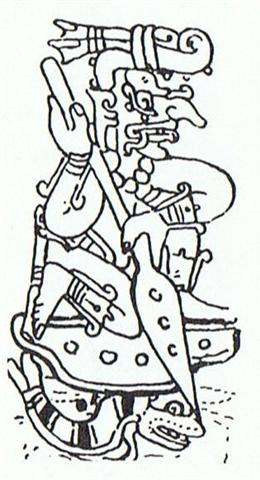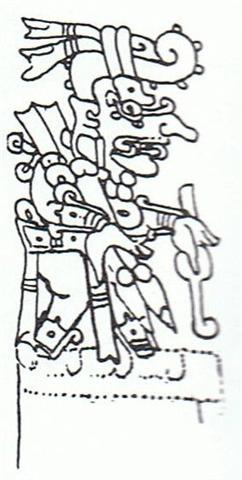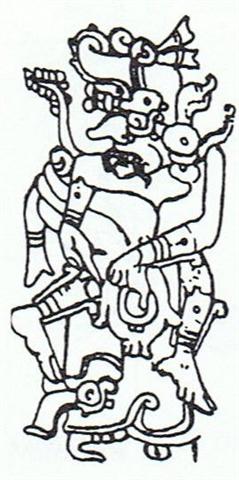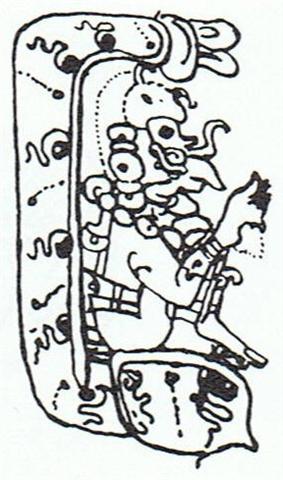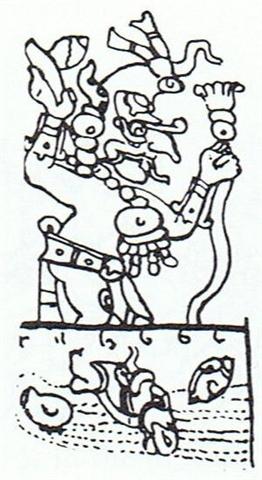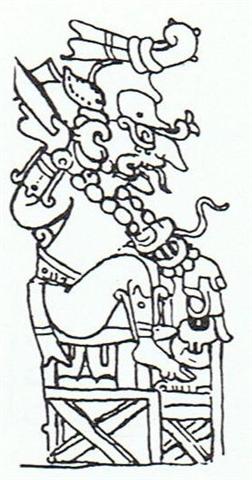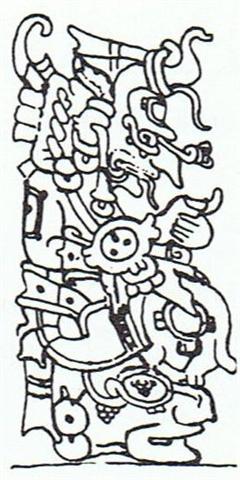5. The midsummer pole goes down through the earth and emerges in winter at the other end. The Rain God series has the summer part of the pole as number 4, after the Kuukuu season, and that is the end of the year (signs of looking back):
The winter part of the pole is number 8:
Only 4 Rain God pictures are needed for half a year. Possibly each Rain God picture therefore corresponds to 32 days. Because 4 * 32 = 128, or half 256, and this is the number of days from day number 105 up to and including day number 232:
The curious arms of tagata in Gb5-5 maybe can be explained as an allusion to the shape of manu kake (cfr Ga4-21). The balance (Libra) between the summer 'year' and the winter 'year' - between day and night, between land and sea - could be the origin of the manu kake glyph type, although the climbing bird (manu kake) will begin his climbing already before spring equinox. According to the round Dendera zodiac land covers 12 / 16 or 75 % of the year (not 50 % which is the measure from equinox to equinox). 256 / 0.75 = ca 341 and 471 (the number of glyphs incised on the G tablet) - 341 = 130 = 5 * 26. The hole in the belly of Rogo in Gb1-3 presumably represents the hole through which the pole enters. From there to tagata at day number 360 there are 8 * 16 = 128 days. |
|||||||||||||||||||||||
